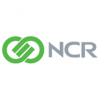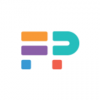
EdgeDB, the first open-source graph-relational database developer, announced a $15 Million Series A funding. Major players from the industry, including Vercel, Firebase, GitHub, IBM, OpenAI, ICONIQ Capital, and Netlify, contributed to an investment led by Nava Ventures and Accel. EdgeDB is reinventing relational databases with an emphasis on the developer experience. With 20,000+ monthly active users and 9.6k stars GitHub ratings, the company's database has experienced quick acceptance. The recent funding will help the EdgeDB Cloud expand and extend the EdgeDB development team. Daniel Levine, Accel Partner, and Freddie Martignetti, Nava Ventures Founder, will join the EdgeDB Board of Directors after this round. EdgeDB has been embraced by many firms, including BeatGig, a Y Combinator company.
In 2019, EdgeDB announced the beta release of its graph-relational database, claiming to be recreating the conventional relational database with a vastly improved development experience. At its core, it is still a relational database. It is built on an object-oriented data model with a rigid graph schema and current query language to ensure user-friendliness.
Redesigning Relational Databases With a Developer-Centric Approach
EdgeDB, an open-source graph-relational database, was created to address some significant ergonomic issues with relational schema modelling and SQL to enhance type safety and performance. In its simplest form, EdgeDB is a relational database with an object-oriented data architecture, a rigid graph schema, and a contemporary query language. EdgeDB includes:
- First-rate schema migration tools.
- A practical graphical user interface.
- Comprehensive client libraries for popular programming languages.
EdgeDB Cloud, which is anticipated to launch in 2023, will offer native connectors with GitHub, Vercel, and Netlify, zero-configuration and streamlined DevOps, a practical UI, and close integration with the current EdgeDB tooling.
Minimizing the Mismatch in Object-Relational Impedance
According to Yury Selivanov, co-founder and CEO of EdgeDB, the company will expand the workforce and introduce EdgeDB Cloud, the database solution's hosted version that was previously announced.
Tables, columns, and rows are used to create a schema for relational databases. In contrast, application developers use objects rather than tables when working with programming languages like Python, JavaScript, or C++.
The object-relational impedance mismatch is a long-standing issue with relational databases and programming languages that have been recognized for decades.
EdgeDB raises the relational database model to a higher-level data model where the main entities that developers interact with, are objects. Previously, the relational database model could only deal with tables. It incorporates an object-type structure conceptually comparable to a table in a conventional relational database.
Tables in a relational database are linked together using the Join SQL function. In EdgeDB, the concept of a link, which denotes something from one item to another, is used in place of a SQL join.
The discrepancy is that programming languages utilize objects, whereas relational databases use tables. ORM (Object-Relational Mapping) is the method by which database suppliers and developers have closed the gap. Every programming language has an ORM that maps tables to the objects specific to that language.
About EdgeDB
In 2019, Selivanov and Elvis Pranskevichus co-founded EdgeDB. EdgeDB is the first open-source graph-relational database as the replacement for SQL and the relational paradigm. It aims to solve some hard design problems that make existing databases unnecessarily onerous. EdgeDB uses the Graph Relational Model, where relationships are connected through objects and data is represented and stored as strongly typed objects.






















